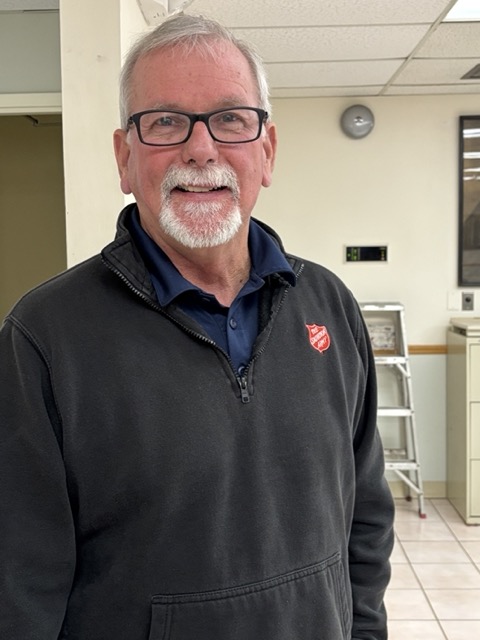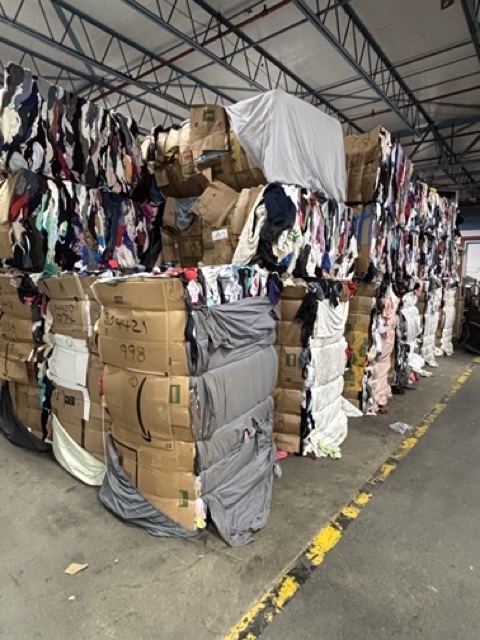#Salvation #Army #Mission #Provide #Profit #WorthPoint

Photo: Brenda Kelley Kim
During this time of year, as shoppers rush around finding the right gifts, the sound of bell ringers can be heard on street corners and sidewalks. Salvation Army volunteers are out in full force, standing by red kettles and ringing a little bell, reminding everyone that even a few coins can help them achieve their mission.
The Salvation Army was founded in London by a minister named William Booth. He dedicated much of his time to the streets, reaching out to individuals who either wouldn’t attend church or felt unwelcome in the grand cathedrals. Initially, it was called “The Christian Mission,” but later, after reading a description of his program that called it a “volunteer Army,” he changed it to “a Salvation Army,” and the name stuck.
The program eventually spread to the United States, which was in the grip of the post-Civil War period and trying to unite after a bloody war that divided the country. Early organizers worked to spread their faith and improve the lives of those they ministered to. Today, the numbers show that it’s become a global organization, operating in 134 countries and providing medical care, addiction counseling, job training, and ministry to millions.
TODAY’S SALVATION ARMY
Today, the organization and its programs are instantly recognizable, especially during holidays. Their family stores, which opened across the United States in the 1920s, were a way for those who had extra clothing or home goods to get those items to families in need. The revenue generated from the stores funds the Salvation Army’s programming. The organization receives no government funding; all its income comes from the money raised from sales in its stores and charitable donations from businesses and individuals.
WorthPoint sat down with Tim Tierney, Director of Business for the Salvation Army Boston Business Center/Adult Rehabilitation Center in Saugus, MA. Tierney explained the center’s operations, how the training and therapy help community members, and how the massive clothing and household goods that pour into the organization are sorted, priced, and sent to stores or other destinations.

Photo: Brenda Kelley Kim
The Last Mile
WorthPoint: Thank you, Tim, for talking to us today. We think our subscribers and readers would love to know more about the Salvation Army’s mission and what’s behind its network of stores and services.
Tim Tierney: You’re welcome. We’re very familiar with WorthPoint; it really helps our store employees and shoppers as well. We get so many fantastic items from donors. We want to make sure everything is priced correctly and is accessible to families that have limited funds while still bringing in a little revenue for our programs.
WorthPoint: Yes, many of our users are familiar with the stores. They can be a great source for pickers and thrifters, and we were hoping to learn more about the “last mile” and how the donated items get to your store shelves.
Tierney: Of course. It’s quite a process. We are lucky to have the people who run our Adult Rehab Centers to make much of it happen. Our location here in Saugus has a residence that currently houses about 30 men, though we have the capacity for around 90. We don’t have a women’s program at this location, but we serve women at other centers. The men receive 6 months of job training, room and board, counseling, emotional and spiritual support, and transitional assistance when they complete our program.
WorthPoint: So, in the back, in the warehouse, the workers are all part of the program?
Tierney: Yes, and we couldn’t complete our mission without them. They sort the thousands of pounds of donations we get and decide what can go to our stores and what gets sent to our online division. Some items, like artwork or higher-end clothing and accessories, go to the e-commerce part of the Salvation Army. To reduce waste and reach more people, we have widened the audience since not every area will have a brick-and-mortar store.

Photo: Brenda Kelley Kim
Tierney then took us on a walkthrough of the warehouse. It’s an enormous space filled with bales of clothing, shoes, and other items. Tierney explained that the items, mainly clothing, shoes, and accessories, are sorted. If an item of clothing is no longer wearable, it goes to companies that will use the cloth for making rags, so even a faded old sweatshirt with holes in the sleeves can be useful.
We asked about some of the stories behind the donations, and Tierney said there definitely were some memorable moments. He recalled a suit that someone donated with a significant amount of cash in the jacket’s pocket. They were able to track down the donor, and eventually, they got the money back to them. Tierney explained, “While we can’t always guarantee that we will find something a donor has inadvertently given away, we were delighted that we were able to return their money.”
WorthPoint: Once all of this clothing, etc., is sorted and ready for the store shelves, how do you handle pricing?
Tierney: Our store managers and employees take care of pricing items going to the stores. They have access to WorthPoint and can research some items, but our goal is to make the inventory accessible to families and individuals who need lower prices. We never want to take advantage of anyone with our prices. In the same way, we can’t afford to be taken advantage of either. If we get an item worth a bit more than the average dish or jacket, like a collectible or an antique or vintage piece, those sales can bring in revenue above the regular prices, which in turn helps us provide more services and programming to our clients. It’s a balance, but we try to lead with a service mindset.

Photo: Brenda Kelley Kim
While the Salvation Army does receive its goods for “free” as donations, the costs of maintaining the warehouses and stores, paying retail employees, purchasing and maintaining trucks for pick-ups, and their social programs are all expenses that have to be met. “We aren’t jacking up prices or getting into the antique business; we are simply trying to help families, and to do that, we need to stay in business.”
Tierney says it’s a challenge but one that he welcomes. He previously served in the military, understands the structure of officers in the organization, and believes fully in the mission. “If I didn’t find this job, I might have just retired. It’s about the mission for me.”

Photo: Brenda Kelley Kim
If you’d like to check out a Salvation Army store, a list of locations by zip code can be found here. Many items are also available on eBay.
Brenda Kelley Kim lives in the Boston area. She is the author of Sink or Swim: Tales From the Deep End of Everywhere and writes a weekly syndicated column for The Marblehead Weekly News/Essex Media Group. When not writing or walking her snorty pug, Penny, she enjoys yard sales, flea markets, and badminton.
WorthPoint—Discover. Value. Preserve.



